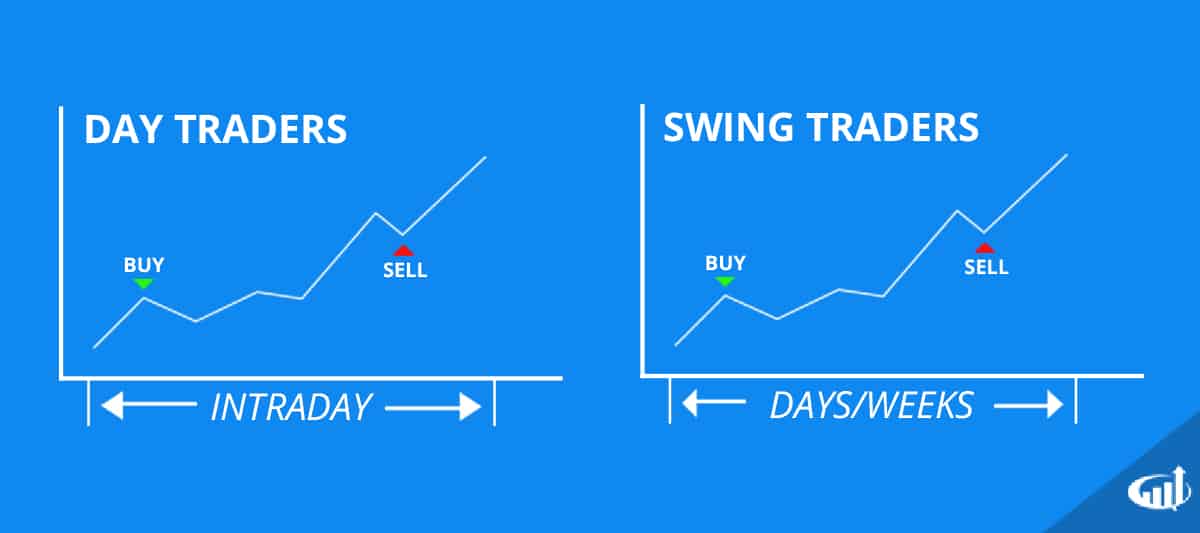Day trading and swing trading are two well-known tactics that stand out in the broad world of financial markets. Both approaches accommodate varying trader temperaments, risk tolerances, and time constraints. To effectively navigate the markets, traders must comprehend the subtle differences between these tactics.
Day Trading
Day trading is the practice of making trades inside a single trading day to profit from short-term price changes. To reduce overnight risks, traders in this arena usually close out all their bets before the market closes. Day traders are drawn to the activity because it offers the possibility of making quick profits by taking advantage of intraday volatility.
Pros
Day trading presents traders with the chance to make earnings quickly and has the attraction of rapid pleasure. Traders can take advantage of small price changes to generate substantial profits due to this quick turnover. Additionally, day traders can lower overnight risks because they do not hold holdings overnight, which lessens their exposure to unexpected market developments.
Day traders also benefit from improved focus and concentration during market hours because they must pay close attention to price swings. They can also obtain support from competent forex prop firms who will guide traders with all of their experience and through their standardized platform. Improved decision-making and prompt trade execution can result from this increased awareness. Additionally, compared to other trading methods, day trading takes less capital, which makes it available to a wider spectrum of traders, including those with low resources.
Cons
Despite its appeal, day trading has risks and obstacles of its own. It is fast-paced and requires making decisions quickly, with minimal margin for error. Since rash choices can result in large losses, emotional control is essential while day trading. Additionally, the extreme concentration needed during market hours can be emotionally and mentally taxing for traders, eventually resulting in burnout.
Another disadvantage of day trading is the high frequency of transaction costs, such as fees and commissions, which can reduce profits, particularly for high-frequency traders. Day traders also must invest a significant amount of time because they must spend the entire day watching the markets and making transactions, which leaves little time for other activities.
Swing Trading
The goal of swing trading, on the other hand, is to catch bigger price changes inside the dominant market trend by holding positions for a few days to weeks. The freedom to close out positions within a single trading day is not a constraint on swing traders, unlike day traders, which gives them more latitude in deal execution.
Pros
Traders might potentially make more money with swing trading than they do with day trading by taking advantage of medium-term market movements. Swing traders can increase their potential profits by riding the momentum of the market trend and holding onto their positions for a few days or weeks.
Additionally, swing trading is a better option for traders with hectic schedules because it demands less time commitment than day trading.
The ability to avoid the noise and volatility of intraday swings is another benefit of swing trading, enabling traders to base their judgments on more comprehensive market trends and more informed analysis. Comparing this longer-term view to day trading can result in more clarity and less emotional strain. Strategic risk management strategies, including placing stop-loss orders to reduce possible losses, can also be used with swing trading.
Cons
Swing trading has disadvantages and possible advantages. Since positions are kept aftermarket hours, swing trading presents a number of difficulties, one of which is the possibility of overnight gaps. Unexpected news or occurrences can cause these overnight gaps, which can result in large losses for swing traders. Swing traders also need to be disciplined and patient because they must fight the impulse to close positions too soon and stick to their trading strategy.
Swing trading also has a drawback in that it requires more cash than day trading because positions are kept for longer periods, which ties up capital. Furthermore, because swing trading lacks the excitement of intraday price swings, it might not be appropriate for traders who love the rush of fast-paced trading.
Conclusion
Day trading and swing trading provide distinct chances and challenges for financial market traders. For traders who prefer less frequent trading and have a longer-term view, swing trading is more appealing than day trading for those who are looking for immediate returns and intraday action. The decision between day trading and swing trading ultimately comes down to personal preferences, the level of risk one is willing to take, and the goals one wishes to achieve in trading.

